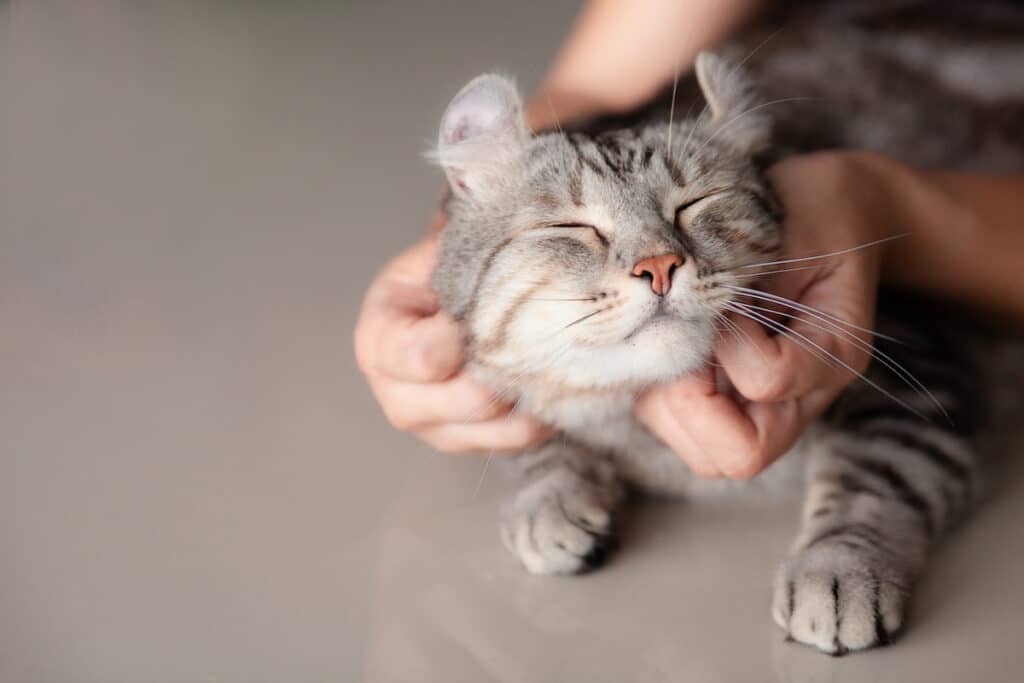You probably enjoy petting cats if you adore them. Many cats adore being petted and will go looking for it. Some people don’t want to be touched at all. As long as it’s done on their terms, most cats like being petted. Even though each cat is unique, there are certain places where cats like to be pet. The need for petting in a cat depends on the cat’s personality, background, and relationship with you.
Knowing where cats like to be pet will help you give your kitty what they need and deepen your bond.
Where Cats Like to Be Pet
Once you’ve gotten to know the cat, you might want to attempt caressing it in additional places. Many cats like being petted by reliable individuals in the following situations:
- Sides of the face
- Top of the head
- Neck
- Under the chin
- Along the sides of the body
- On the shoulders
- Along the back towards the tail
The cat may start to purr, knead, and even drool if it is enjoying being pet. Be mindful that touching in some of these places can cause a cat to feel nice one second before making them feel exposed or overstimulated the next. While being petted, some cats will suddenly meow, hiss, growl, scratch, or bite. Overstimulation aggression, or petting-induced hostility, is what this is.
The cat may roll onto its side and show its belly when it wants some affection. This could be a sign of the cat’s comfort and ease. Usually, they don’t mean for you to touch their belly. Some cats, meanwhile, actually like having their bellies scratched. You could try petting your cat there if it’s yours, but exercise caution. Some cats like to gently scratch you, especially if your fingernails are long. You should start this action cautiously and monitor the cat’s reaction.
Where Cats Don’t Like to Be Pet
There are certain areas where most cats don’t like to be pet. Avoid touching “private” regions like the anus and genitalia when petting cats. It makes cats uncomfortable and could result in a cat bite. Even if your cat displays its rear end to you, refrain from petting these parts. Although preferences will differ from cat to cat, there are several things that are best avoided. Although there are always exceptions, the majority of cats do not like the following types of contact:
- Belly
- Feet and legs
- Thighs
- Tail, especially the underside
A good rule of thumb is to refrain from cuddling or picking up cats unless you are familiar with them and know they like it. It’s possible that your cat likes stuff other cats don’t. Contrary to popular belief, not all cats respond well to the same treatment.
How to Tell if a Cat Does Not Want to Be Petted
Cats connect with humans by using a variety of signals. If you know what to look for while petting a cat, you might be able to tell that the cat wants you to stop. If a cat reacts in any of the following ways, do not attempt to pet it:
- Arching the back or moving away from your hand
- Flattened ears
- Narrowed eyes
- A tail that is swishing, puffed up with fur, or rigid and held high
- Vocalization like hissing, crying, high-pitched meowing, and growling
- Running away
- Hiding
Simply leave the cat alone if you see any of these actions. When things have calmed down, they might contact you again.














